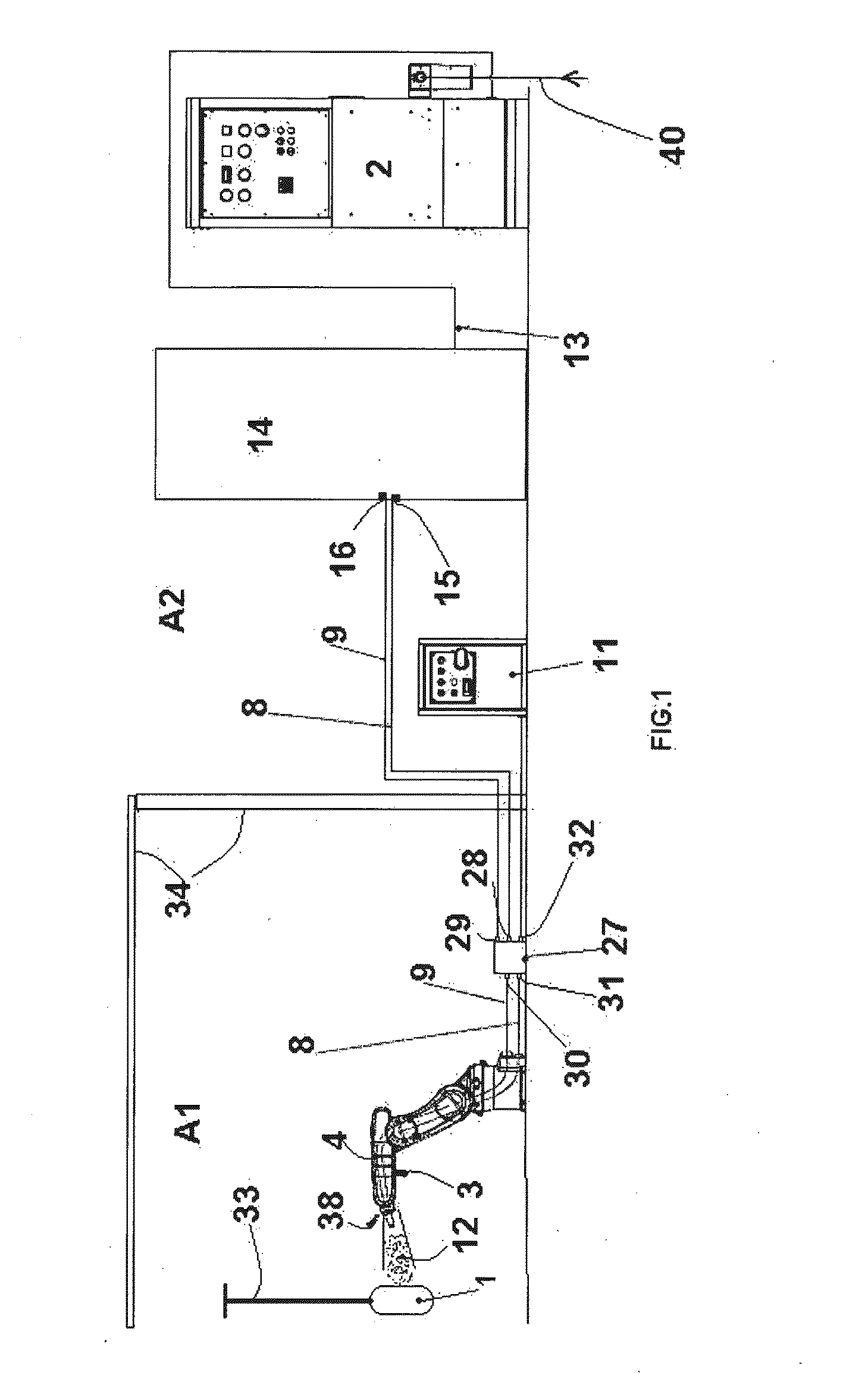Air spray painting apparatus
a technology of air spraying and spraying apparatus, which is applied in the direction of electrostatic spraying apparatus, lighting and heating apparatus, combustion process, etc., can solve the problems of satisfactory uniformity, difficulty in maintaining the viscosity of paint constant, and system of a known typ
- Summary
- Abstract
- Description
- Claims
- Application Information
AI Technical Summary
Benefits of technology
Problems solved by technology
Method used
Image
Examples
Embodiment Construction
[0031]With reference to the drawings, described hereinafter is an apparatus for electrostatic painting of substrates 1 arranged in a painting area A1, for example substrates conveyed by a robotized conveying system 33 within a painting tunnel closed by walls 34 that separate it from an external area A2.
[0032]Installed in the external area A2 is a generator of carrier fluid 2, comprising, for example, hollow-fibre separation membranes and / or PSA separation systems for modifying an incoming flow 40 of compressed ambient air.
[0033]Preferably, the carrier fluid is constituted by a mixture made up of nitrogen in a range of 80-98%, oxygen in a range 1-90%, and argon in a range 1-2% obtained by continuous separation starting from a flow of compressed air taken in from the environment deprived of residual substances not comprised in the composition appearing in the table given above.
[0034]The generator 2 is operatively connected to a unit 14 for regulation and control of the pressure of the...
PUM
 Login to View More
Login to View More Abstract
Description
Claims
Application Information
 Login to View More
Login to View More - R&D
- Intellectual Property
- Life Sciences
- Materials
- Tech Scout
- Unparalleled Data Quality
- Higher Quality Content
- 60% Fewer Hallucinations
Browse by: Latest US Patents, China's latest patents, Technical Efficacy Thesaurus, Application Domain, Technology Topic, Popular Technical Reports.
© 2025 PatSnap. All rights reserved.Legal|Privacy policy|Modern Slavery Act Transparency Statement|Sitemap|About US| Contact US: help@patsnap.com



